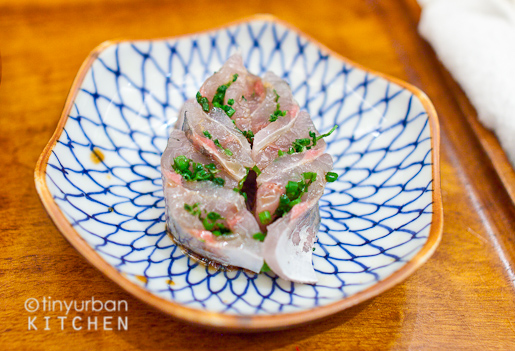
Sushi is one of my favorite foods. I have eaten at many fine sushi restaurants across the US, ranging from Sushi Gen in L.A. to Oishii in Boston to Sushi Yasuda in New York. I have made sushi and sashimi at home many times. And, my mom owned a sushi catering business for years. In fact, I have always regarded myself as a connoisseur of the food.
That is, until I went to Japan.
Eating at Kyubey, one of Tokyo’s oldest and most highly regarded sushi restaurants, showed me that, actually, I didn’t know nuttin about eating sushi.
Founded in 1935, Kyubey is a high-end sushi restaurant tucked away in a non-descript back road in Japan’s ritzy Ginza district and just a 10-minute walk from Japan’s famous Tsukiji fish market. Yosuke Imada is the second generation chef-owner and has won numerous awards for his restaurant, including a Michelin star back in 2008. Kyubey is consistently listed as one of the best sushi restaurants in Tokyo.
I fell in love with Kyubey when I first visited the place in the spring of 2009. Just a couple weeks ago, Bryan and I had the privilege to go back again for a second visit!
Here are the top eight things I learned about sushi from eating at Kyubey:
1. Wasabi Goes on Fish and Is Not for Making Soy Sauce Paste
Whenever Bryan eats sushi, he always makes a thick wasabi paste. The paste has to be thick enough to coat heavily onto the fish so that he can experience “the rush” (as he calls it) when he eats each bite of sushi. Can you imagine his surprise, and maybe even disdain, when restaurants in Japan consistently omitted that familiar green blob from his sushi orders?
Thankfully, the warm and friendly folks at Kyubey helped us out in that arena.
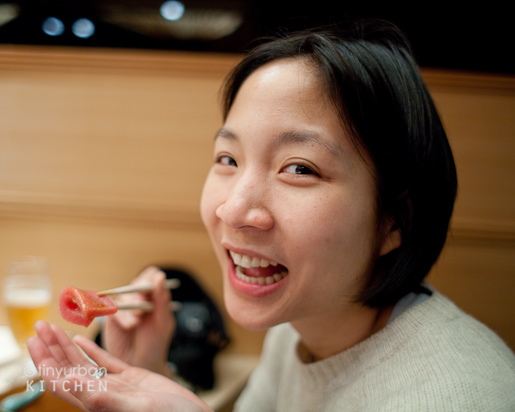
Wasabi is only for serving with sashimi and never for putting in soy sauce. Since sushi already has wasabi inside it, you aren’t supposed to add additional wasabi to it. In fact, many Japanese restaurants won’t even give you any--in contrast to the large dollops of wasabi that US sushi restaurants typically provide.
Eating wasabi this way definitely enhances the enjoyment of the quality of the sushi itself, if you’re eating high quality sushi like at Kyubey. Otherwise, Bryan still likes to use lots of wasabi paste.
2. Cooked Shrimp is Not Cheap Filler 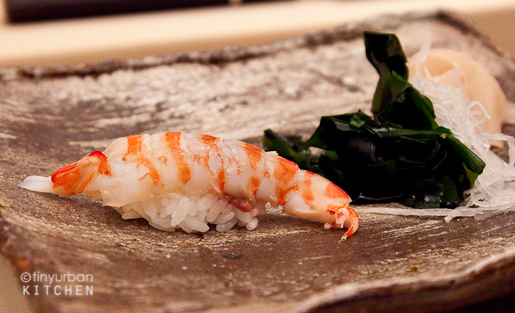
Around Boston, many of the best sushi restaurants are located in the town of Brookline, which has a large Jewish population. In order to cater to the locals, these sushi restaurants in Brookline frequently have a “no shellfish” kosher option. Even though I am not Jewish, I always order “no shellfish” at these restaurants because, typically, “no shellfish” = “no dry, bland cooked shrimp nigiri.” I have never liked cooked shrimp nigiri and always regarded it as cheap filler food.
Trying cooked shrimp at Kyubey was truly a revelation. These prawns (kurama ebi) were incredibly sweet, with a tight firm texture that exploded into sweet juiciness when you bit into them. I never thought I would like shrimp, but there’s definitely no need to ask for “no shellfish” if I’m at Kyubey.
3. Freshness & Quality Make All The Difference (Duh!)
I have always disliked ikura (fish roe) for its weird texture and off-putting salty “mini-explosions” inside my mouth. Similarly, I hated uni (sea urchin) that I tried in the US because it was stinky and slimy.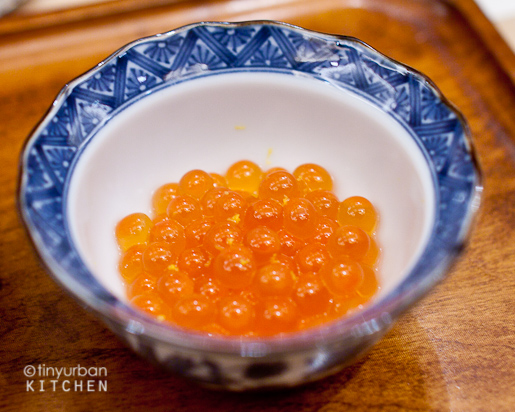
Trying ikura and uni at Kyubey was like experiencing flavors I had never tasted before. Instead of being overly salty and off-putting, the tiny delicate balloons of roe popped in my mouth to release a subtle yet definitively clean umami taste of the ocean, tempered perfectly with a small sprinkling of lime zest. Similarly, the uni was sweet and creamy without a hint of fishy-ness. Freshness and quality had completely transformed the humble uni and ikura into masterpieces.
In fact, chef-owner Yosuke Imada is obsessed with freshness and quality. Kyubey serves over 40 types of fish at any one time, and only serves local, Japanese fish. There are no imports here. Being one of the biggest players in the fish market, Kyubey has access to some of the top picks at the fish market, and Imada makes sure he gets it. Case in point: at the beginning of the bluefin tuna season last year, Imada and another sushi owner jointly paid the highest price in 8 years for one bluefin tuna – 9.63 million yen ($116,000 USD using today’s rates). He ended up not even making a profit on that fish, yet he vowed he would do it again. If anyone was going to have the best fish in Tokyo, Imada wanted it to be Kyubey.
As an interesting side note, Kyubey actually invented the classic uni roll you see at restaurants today. Called gunkan-maki, which translate to warship roll, this vertical roll is filled with rice and topped with ikura or uni.
4. There is no Salmon In Japan
Salmon has always been my all-time favorite fish for eating raw. Imagine our utter shock and surprise when we realized that Kyubey (and other high end sushi restaurants in Tokyo) do not serve salmon! Salmon in Japan is imported, and since Kyubey only serves the freshest local fish from Tsukiji, you won’t find a sliver of salmon there.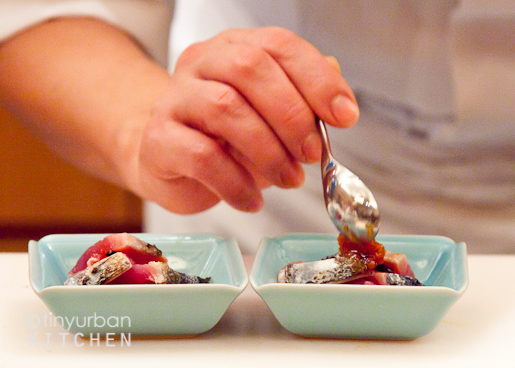
It’s quite alright, really. At Kyubey I came to understand why the Japanese love tuna so much. The fresh toro, otoro, and chutoro (different grades of tuna belly) tasted like nothing I’d ever had before - soft and buttery, with a melt-in-your mouth richness that's really hard to describe. You just have to try it. The seared chutoro was especially phenomenal, as the light sear melted just a bit of the fat on the surface, enhancing the beautiful rich and buttery flavors even more.
Honestly, I didn’t miss salmon one bit.
5. Fresh Sometimes Means Live and Twitching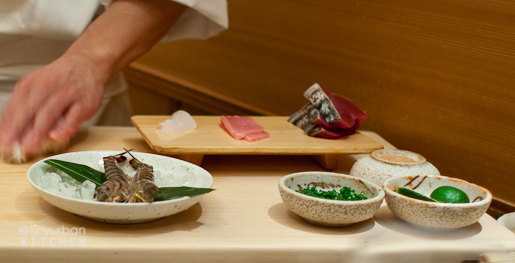
We were about halfway through our omakase when when noticed something jump on the plate in front of us. Chef Gouke-san quickly darted out his hand to cover what turned out to be live prawns on the plate. One nearly succeeded in its escape as it jumped off the plate, but Chef Gouke-san made sure that didn’t happen.
I turned to Bryan, my face a little green, “I don’t want to eat that.”
Suddenly, swiftly and in one quick, humane jerk, Chef Gouke-san twisted their heads off and removed the shells. Moments later, a perfectly formed kurama ebi nigiri was sitting in front of me.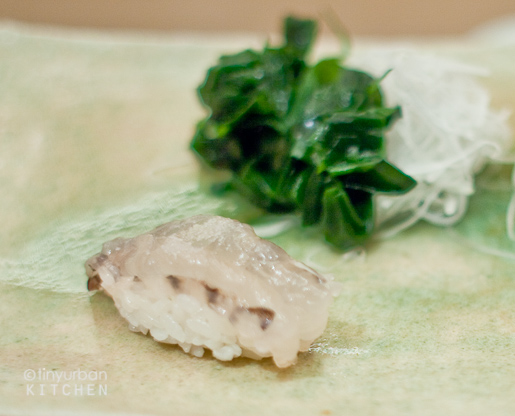
Twitch Twitch
Was I imagining things? We stared intently at the piece in front of us. The flesh was still moving.
Twitch Twitch
I turned yet another shade of green.
“You have to eat it while it’s fresh.”
With my eyes closed, I quickly grabbed the sushi and stuffed the entire piece in my mouth. I chewed faster than I had ever chewed in entire my life, at the same time desperately trying to squash visions of "twitch twitch" in my mouth.
I’m sure that piece of ebi was the most delicious piece ever, but to be honest, I was a bit too stressed to enjoy that one.
Check out the video at the end of the post to see some twitch twitch action plus other footage of the above experience!
6. Yebisu is Sapporo’s Good Stuff
Sapporo is one of Bryan’s favorite Japanese beers, and he likes to order it when eating sushi. The first thing we did when we sat down at Kyubey was to order a “Sapporo.” The server nodded politely and then brought a “Yebisu” over.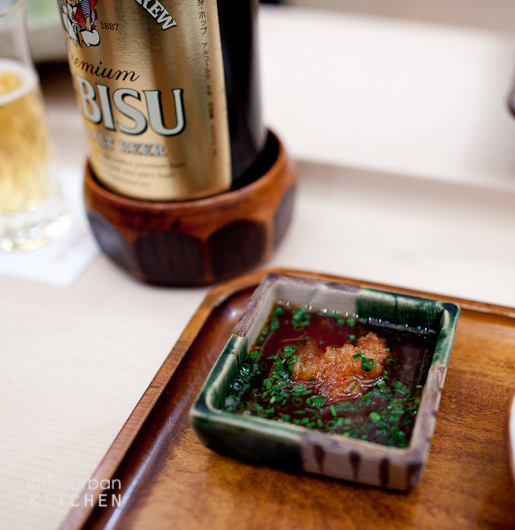
“Sumimasen, but I ordered a Sapporo,” Bryan called out to the server, motioning for her to come back.
“Yebisu is Sapporo, but better, higher.” She explained as best she could. And, indeed it was.
Yebisu is Sapporo’s high-end beer, and we have never seen it in the US. It has a much maltier and more complex flavor while retaining all of the typical crispness of a Sapporo. If you order the Yebisu at Kyubey, you won’t go wrong.
7. This is Why Training to Become a Real Sushi Chef Takes So Many Years
When my mom decided to start catering sushi in Ohio on a whim, she spent a few days with this sushi guy to learn the ropes. Within a few weeks she was making and selling sushi to local supermarkets. When Bryan saw my mom doing this, he said, “if your mom can do that, how can it really take 7 years to become a sushi chef?”
Once you visit Kyubey, the answer is quite evident.
a) Rice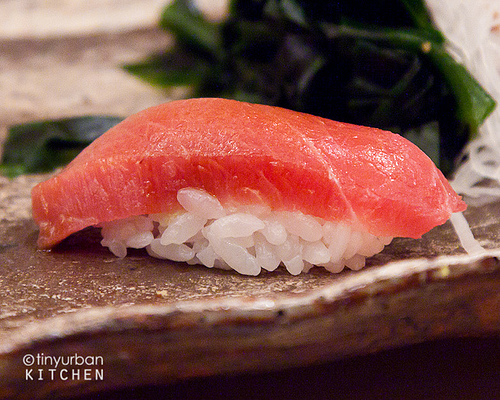
I’ve heard that the first few years of being a sushi chef involves just learning how to make rice. Now that I’ve tried sushi at Kyubey, I can totally believe it. I have a new appreciation for the importance of rice texture when it comes to sushi. At Kyubey, the rice was slightly warm, had a perfect al dente texture, and, most importantly, you felt like you could taste each individual grain. I've never had such good rice in the the US before, and I was surprised at how much it enhanced the enjoyment of the sushi. The “training” chefs brought out new rice frequently in small batches, which meant we always had the freshest rice possible with every nigiri piece.
b) Knife skills are important.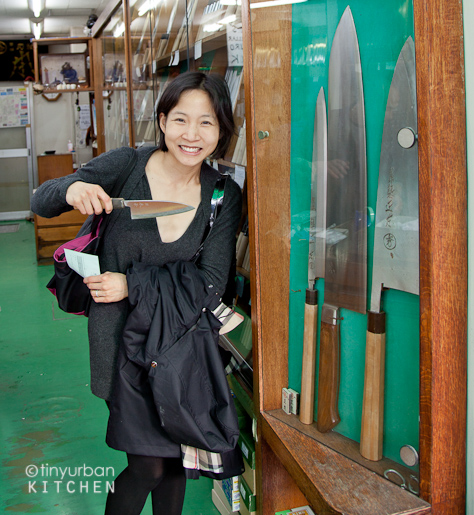
Going to Kyubey is like getting front row seats to a show where you never know what to expect.
We were probably on our second course. I was busy taking photos of the fish and totally missed what happened next.
Chef Takeshima-san picked up his knife, paused, and winked at Bryan.
Whirl Whirl Whirl
The knife and the hand became one indistinguishable blur as Chef Takeshima-san’s hands whipped back and forth at lightning speed. Moments later, perfectly chopped leeks emerged from the whirlwind of knife activity.
Whoaaa!!!! came impressed gasps from around the room.
I glanced up, my face having been buried in the camera.
“You just missed it!” Bryan said. “Stop taking pictures and watch!” The curses of being a food blogger!
At the end of the meal, I begged Chef Takeshima-san to show once more the amazing leek cutting trick. Thankfully, he was kind enough to demonstrate it for me again!
Check out the video at the end of the post to see Chef Takeshima in action!
Besides just the knife cutting trick, which I’m sure is crowd pleaser, Chef Takeshima-san demonstrated impeccable skills throughout the night, everything from effortlessly peeling fish skins off to slicing paper thin daikon sheets with a knife.
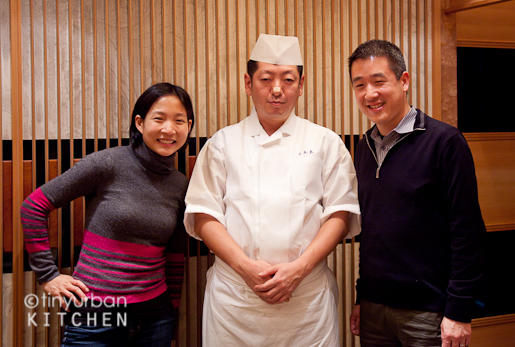
8. Chefs control the flavors, not you
Although we had access to soy sauce and wasabi all night, almost every time we looked at Takeshima-san and asked, “soy sauce?” he would answer with a resounding “No!” (with a smile, of course).
At Kyubey, Chef Takeshima-san individually custom-tailored the flavors of each bite. Sometimes he would brush the fish with a bit of soy sauce while other times he just sprinkled a bit of sea salt. Lime was surprisingly featured often, either in zest form or juice. I actually loved the bright citrus-y notes that lime added to most of the sushi.
Is Kyubey Really the Best Sushi Place In Tokyo?
That's a tough call.
The quality of fish that you will get at any of these top sushi places is going to be very similar. They all go to the same fish market and bid on the same types of fish. The differences come down to knife skills, presentation, and creative interpretations of the fish.
Though it might be true that some of these other top sushi places (often opened by "graduates" who trained at Kyubey), have more exotic ingredients or more interesting preparations, the chefs at Kyubey are still often much more experienced, something that was clearly evidenced by their amazing knife skills.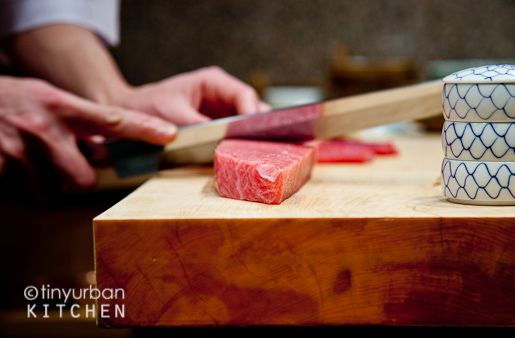
photo from Sushi Kanesaka, one of the "graduates" of Kyubey
Mostly importantly, however, the people at Kyubey are really warm and friendly. Kyubey serves a very international clientele and therefore all the sushi chefs speak reasonably good English. Takeshima-san was a riot, everything from winking at us before doing a cool knife trick to jokingly yelling at us for using soy sauce at the wrong times.
In the end, so much of the omakase experience is your interactions with the sushi chef. Many sushi chefs in Japan hardly speak a word of English, and will only take reservations in Japanese. Even if the food is amazing, you miss out on half the value of an omakase if you can't talk to the chef at all about the food you are eating.
In that regard, I do think Kyubey is one of the best choices for a foreigner to enjoy a true omakase experience. Even if you don't get a chance to try every new exotic sushi preparation, you will have an incredibly fun, informative, and awe-inspiring meal.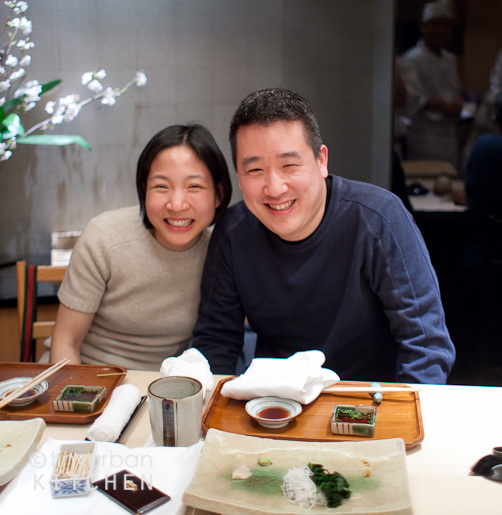
Us after our first meal ever at Kyubey in 2009
The Nitty Gritty Details
Kyubey is located in Ginza in Tokyo one street behind one of the main roads. We always looked for Toy Park as a landmark (near Shimbashi Station). It's on the street behind Toy Park.
Although Kyubey is actually a large restaurant with five stories, it doesn’t feel that large at all, since each floor is small in square footage. There is a hierarchy here, with the first floor (manned by Imada-san himself) reserved for regulars and important people. Of course, you can try reserving a spot there, but it will be much harder to get than a space at any of the other floors. Though we never made it to the coveted first floor, we totally enjoyed our space in the annex - a cozy sushi counter with two chefs serving just 8 people.
Prices are not cheap, with lunch prices starting at ¥4,000 ($48 USD) to omakase meals that go as high as ¥30,000 ($363 USD) a head. I still say it’s worth the money. Go during lunch, which is a fantastic deal considering how much dinner can cost.
I must warn you, though; you will never look at sushi the same way again. It’s really hard to eat ordinary sushi after coming back to the States. Typically, I think it’s awful, and it takes me months before I can have sushi again. I'm totally willing to take that hit though. It's sooooo worth it.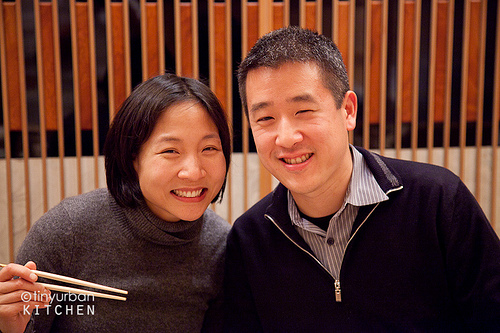
VIDEO - Tiny Urban Kitchen Goes to Kyubey
warning: for those that are a wee bit squeamish, this video contains footage of live prawns having their heads removed by a sushi chef
All music in this video is royalty-free and composed by Kevin MacLeod, licensed under Creative Commons "Attribution 3.0"
Visual Progression of Our Omakase Meal
(In chronological order)
Thank you so much for your support throughout this competition so far. I can't believe it, but I'm in Round 9!! This is my entry for Project Food Blog Round 9: You're the Critic,where we have been asked to review a restaurant. Voting opens Monday, December 6! Voting is now open! To vote, please click here.
All Rights Reserved

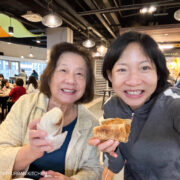
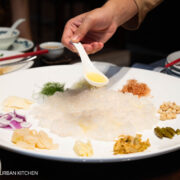
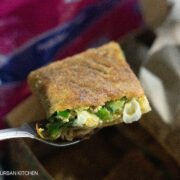
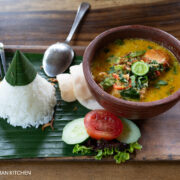


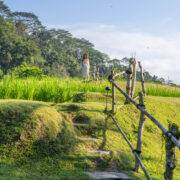
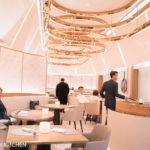
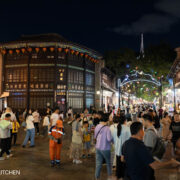
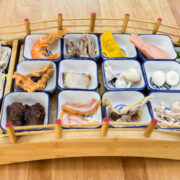

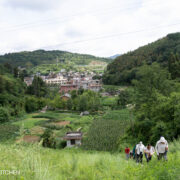

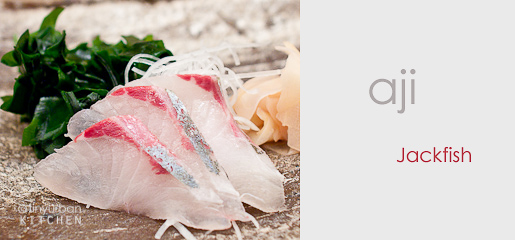
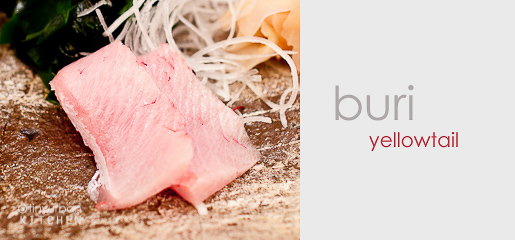

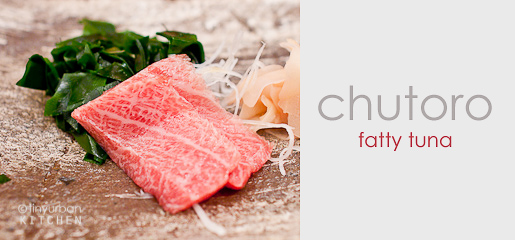
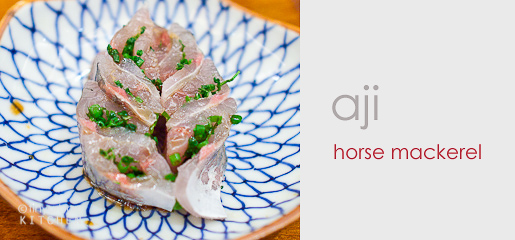
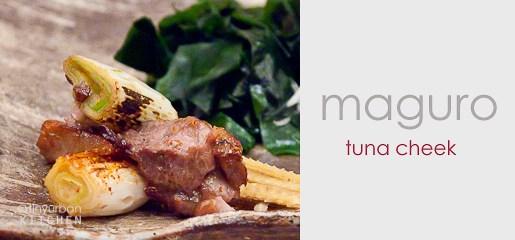
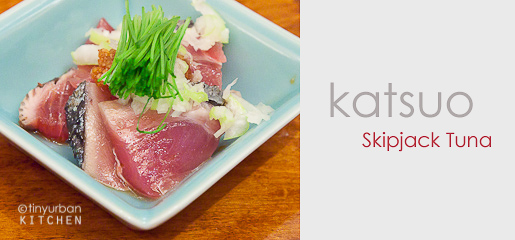

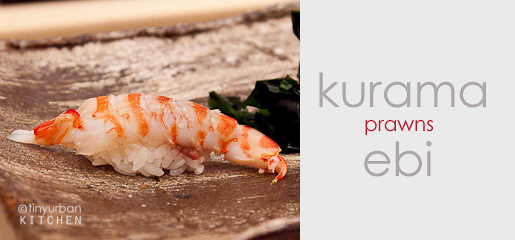
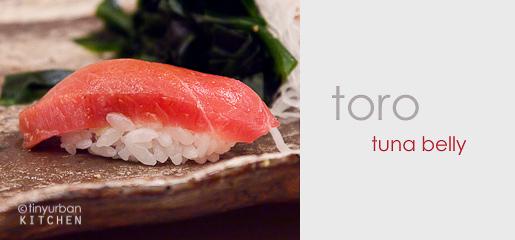
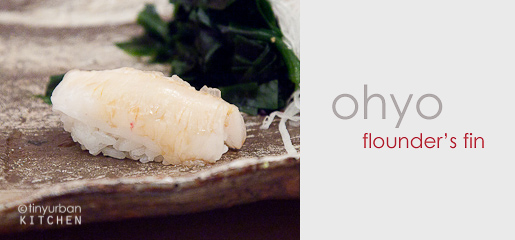
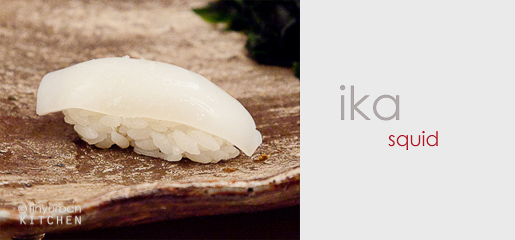
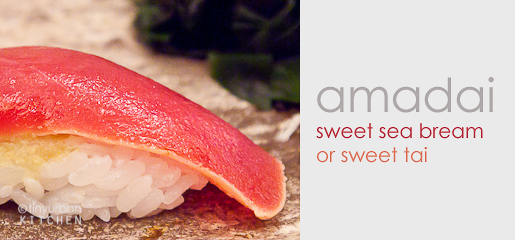
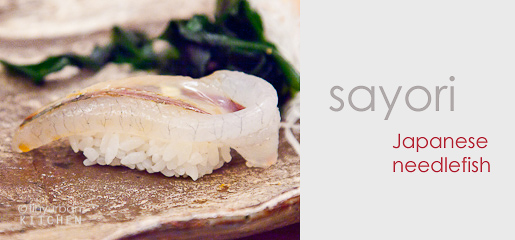
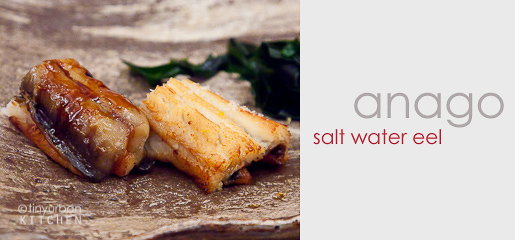
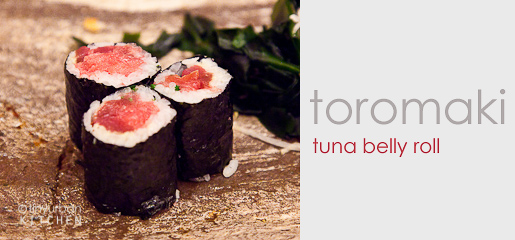
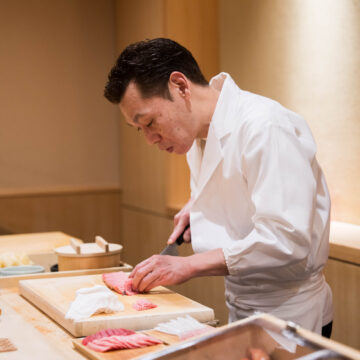
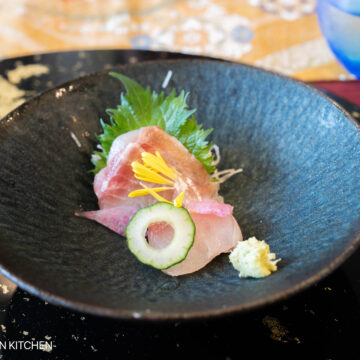
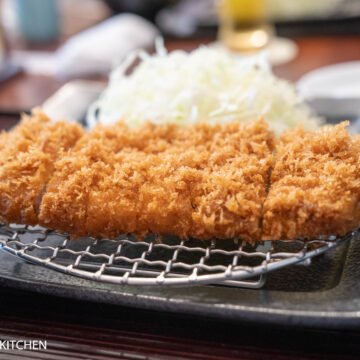
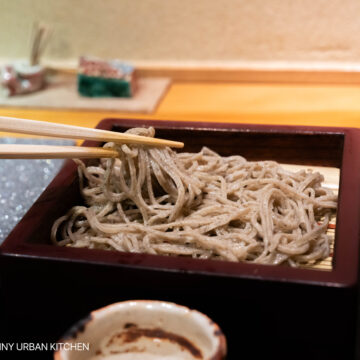
[…] I have a soft spot for Kyubey. […]